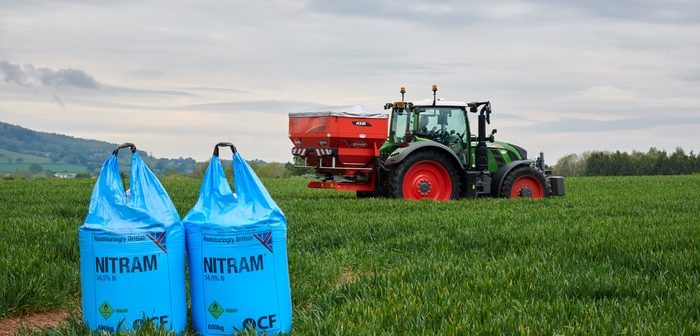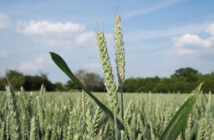Getting much needed Nitrogen into crops in a form they can readily take-up is the number one priority for arable produces wanting to kickstart slow growing and backward plants, says independent agronomist Stephen Harrison.
“There’s so much talked about other nutrients these days that’s it easy to forget the importance of Nitrogen.
“But Nitrogen is still the most effective biostimulant we have and the key driver of crop growth at this time of year, so it’s essential producers prioritise their early applications – particularly following the terrible weather to date.”
With root systems poorly developed and low levels of soil Nitrogen as a result of the high rainfall, N must be applied to crops in a way that ensures it can be used as quickly as possible, he says.
“Ammonium Nitrate is preferable over urea as the N is in a form immediately available to plants whereas that from urea has to go through a chemical reaction with urease before it can be taken up. This can take some time depending on weather conditions.
Winter oilseed rape should be the first crop to focus on using a Nitrogen Sulphur compound and then winter barley is next, he advises.
“Growers should aim to get 50% of all N for winter barley on by the end of March to give it a good kick – you really don’t want to run the risk of shedding tillers. Wheat can compensate by producing bigger grain later, but with barley that’s not the case.”
“Wheat will need 20% of its total N application on as soon as possible and it might be worth applying N to spring barley seedbeds to get them established quickly, too.”
Clive Deeley of CF Fertilisers says there are a lot of small crops coming out of the winter period with very little Nitrogen available in the topsoil.
“Our N-Min testing suggests a lot of N has been washed down the soil profile so it should be available later in the season, but plants need to develop more before they can access it.
“There’s a lot to be said in favour of encouraging this through a ‘little and often’ application approach to get plants growing and in a condition they can utilise subsequent N to the full.
“But remember you need a soil temperature of at least 5oC to be able to see crop growth and we’re only just reaching this in some parts of the country now.
“So don’t lose patience and put on more early N than crops can use – this is never a good idea from either production or environmental viewpoints.”




